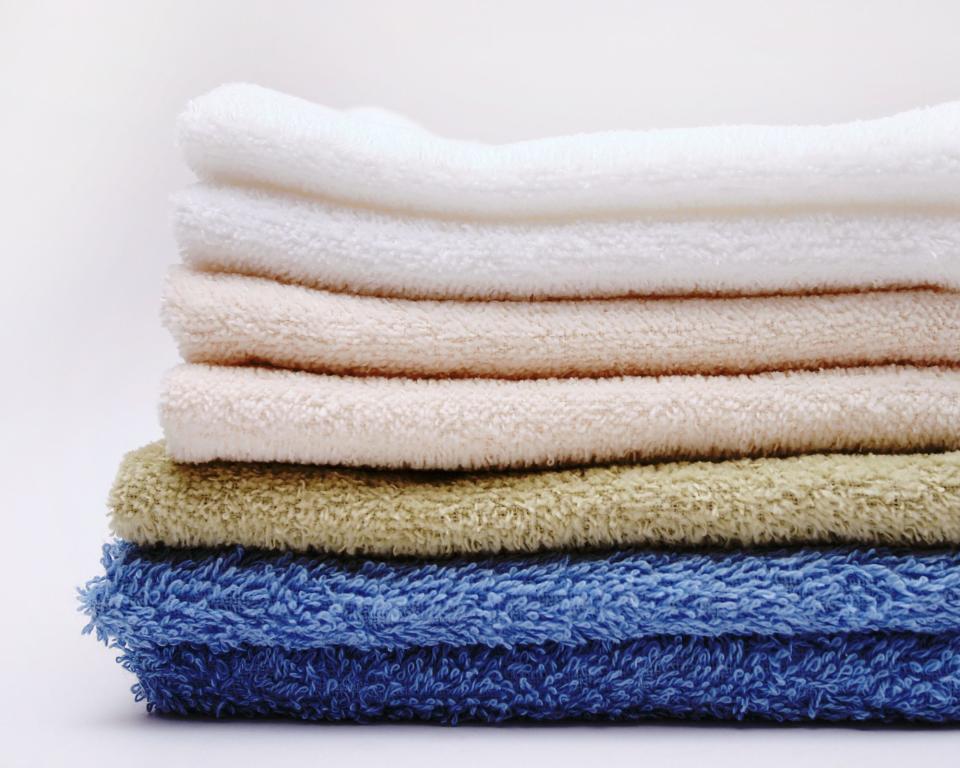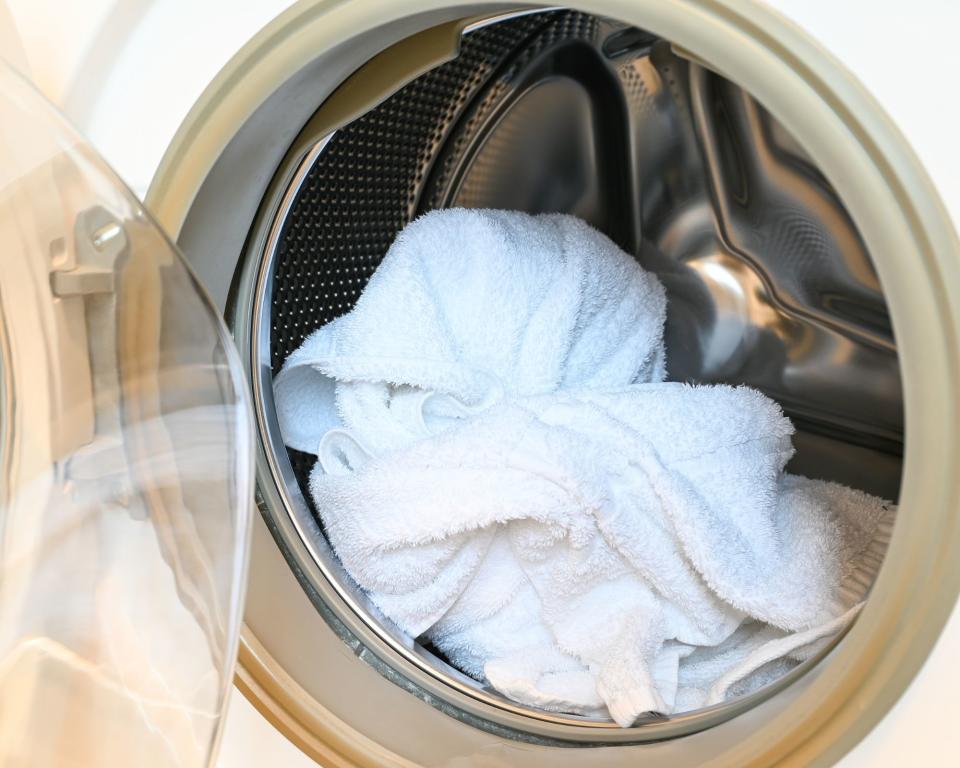How to wash new towels – an expert guide to breaking in bath towels in 5 simple steps

Did you know that you should wash new towels? Yes they may feel soft already, and you're probably more than ready to replace your rough ones with your fresh set, but your bath towels should be broken in first.
Most new towels will have a coating (usually a silicone finish) put on by the manufacturer to keep them feeling plush. While this makes towels soft to the touch, it also means they aren't very absorbent. Washing new towels before use will reduce any residue and increase absorbency, and will get rid of any bacteria that may have built up on the surface too.
There's more to washing your new towels than putting them in the wash with the rest of your laundry, and you should approach the chore differently to how you would when washing towels you've owned for a while. Importantly, you'll want to make sure they stay soft, and keep their color. To find out how to wash new towels properly, we've spoken to the experts and put together a simple five-step guide, so you can dry off without worry.
How to wash new towels

If you've followed our rules for buying towels, whether you've opted for luxurious Egyptian cotton or have picked up a terry towel set, washing them before you use them is essential. Different towels will have their own washing instructions according to the laundry symbols on the care label. Most, if not all, towels will be machine washable and tumble dryer friendly. Follow these expert steps to get your new towels fresh.
1. Keep towels together
Key to keeping the color of your towels looking as vibrant and the texture as soft as when you first got them, Anna Brakefield, co-Founder of Red Land Cotton, advises to always 'keep towels together. By washing towels with only towels, you keep velcro and zippers away. These trims can wreak havoc on towels by pulling, ripping, and fraying delicate terry cloth.'
Fresh towels, especially of brighter colors, are likely to have dye residue on the surface. Removing any other laundry from your washer will lessen the chance of color bleeding.
2. Add the right amount of detergent
How much detergent you use matters: 'Use too much detergent, and your towels become less absorbent ' says Brakefield. It's recommended to use only a third of the amount of detergent you would usually use, and 'strictly follow the directions recommended on the bottle because leftover suds not only affects absorbency but also can lead to bacteria and mold build-up', not to mention affect your washing machine performance.
We like Method's eco-friendly free and clear laundry detergent.
When it comes to fabric softener, scooms founders Emily and Jonathan Attwood suggest against using it entirely, as it will reduce absorbency, and counteract the process of pre-washing. 'Fabric softener can mat down the cotton fibers, leaving your towels too porous.' adds Brakefield.
3. Select a low heat setting

Too much heat in your washing machine can damage the fibers of fresh towels. Emily and Jonathan Attwood suggest you 'machine-wash your towels at 80 to 90 degrees'.
4. Pause the wash to fluff
So your towels stay fluffy, you can pause your cycle mid-way (if possible) and give them a move round. Whilst in the drum, air may struggle to circulate, in turn flattening down fibers. Providing you haven't overfilled your washing machine, fluffing them up halfway will 'return some of the body to the loops and help your towels stay more absorbent, and softer in the future,' says Brakefield.
5. Dry on low
Just like washing and drying silk on too high a setting can damage delicate the material, you should avoid putting your towels in the dryer at too high a temperature – for at least the first few washes. Here Emily and Jonathan Attwood recommend adding wool dryer balls (see below) to 'help reduce tumble drying time and add a little softness to your towels without using chemicals.'
As Brakefield suggests 'even better than drying on low, hang your towels on the line'. If it's warm and dry outside and your outdoor space allows it, letting them dry naturally is the best for new towels. You can 'fluff them as you take from the washer to the sunshine', adds Brakefield.

Handy laundry store dryer balls
These dryer balls are highly rated by over 65,000 customers on Amazon.

Brooklinen wool dryer balls
Ultra durable and long-lasting these are your eco-friendly laundry balls of choice.

Vntub Sheep 6-Pack Premium Wool Dryer Balls
You can pick up this pack for only $5 at Walmart.
FAQs
How do you keep new towels soft and fluffy?
New towels will feel soft and luxurious compared to the ones you've had for some time. Due to natural wear and tear, towels will lose their softness over time. Washing your towels frequently and drying them in the tumble dryer can contribute to their change in texture. To help keep your new towels fluffy and soften up your existing ones, there are a few tips and tricks you can do – including using white vinegar in laundry and using as little detergent as possible.
How do you wash new towels so they don't pill?
It's likely for new towels to shed. As Emily and Jonathan Attwood confirm 'it is possible to get a few stray threads or cotton fibers on new towels which is completely normal. These can be removed on the first wash'.
You can wash new towels according to the guide above, but add baking soda, or vinegar to a hot wash to really break down whatever treatment the towels have on them. This may make your towels feel rough, but you will be free of any lint and potential piling. Also, pay particular attention to choosing a no-heat or low-heat setting on your dryer.
Buying yourself some brand-new towels can feel like something of a treat – so make sure your fresh set stays soft and luxurious by washing them before you get in that bubble bath.

